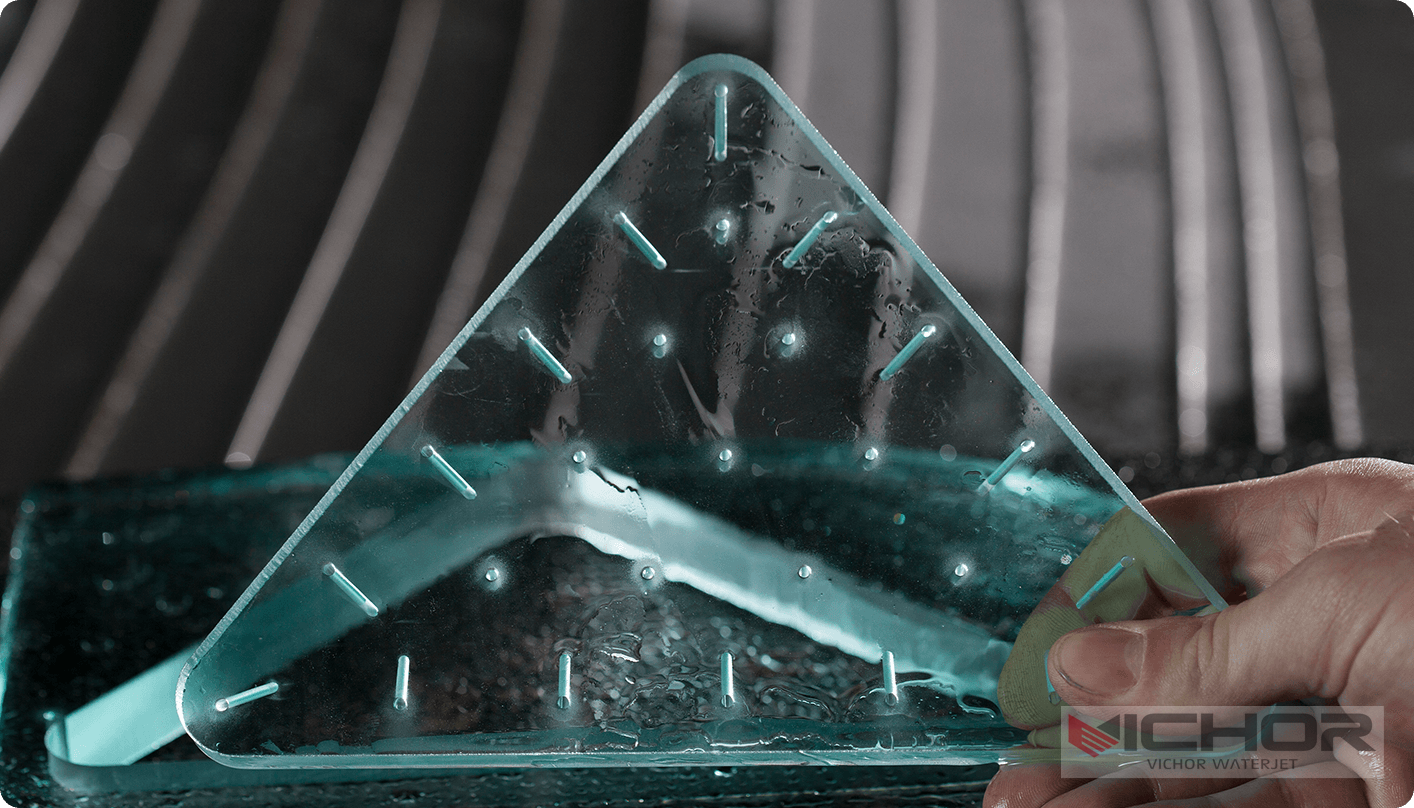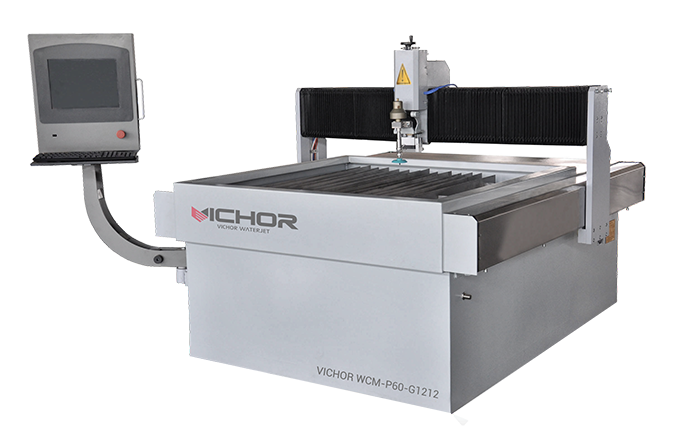
5 Key Reasons a 4x4 Waterjet Table Could Be Your Smartest Shop Investment (2025 Guide)
For workshops, fabricators, and makers seeking precision cutting power without the footprint or price tag of industrial giants, the 4×4 waterjet table emerges as a compelling solution. This versatile workhorse offers a unique blend of capability, affordability, and manageability. But is it the right fit for your needs? This comprehensive guide dives deep into the world of 4×4 waterjet tables, exploring five crucial aspects to help you decide.
What Exactly is a 4×4 Waterjet Table?
Simply put, a 4×4 waterjet table refers to a CNC (Computer Numerically Controlled) waterjet cutting system with a cutting bed (or work envelope) measuring approximately 4 feet by 4 feet (1219 mm x 1219 mm). This size designation defines the maximum sheet or plate size the machine can handle in a single setup. It represents the sweet spot for many small to medium-sized businesses, educational institutions, R&D labs, and job shops needing high-precision cutting for diverse materials.
1. Space Efficiency & Workshop Integration: The Compact Powerhouse
The most immediate advantage of a 4×4 waterjet table is its relatively modest footprint.
Optimized Footprint: Compared to common industrial sizes like 5’x10′ or larger, a 4×4 machine requires significantly less floor space. This is crucial for smaller shops, garages, classrooms, or facilities where space is at a premium. The entire system (table, pump, control cabinet, abrasive hopper) typically fits within a 10’x15′ to 12’x18′ area, depending on the model and pump placement.
Easier Installation: Smaller size translates to lower weight (though still substantial – often 4,000-8,000 lbs) and easier rigging into existing facilities. Doorway access and ceiling height requirements are generally less stringent.
Lower Infrastructure Demands: While still needing robust power (typically 30-50HP 3-phase), water supply, and drainage, the requirements for a 4×4 waterjet table are often less demanding than for larger machines. This can potentially reduce the cost and complexity of facility upgrades.
Improved Material Handling: Maneuvering 4’x4′ sheets of material (metal, stone, tile, composites) is significantly easier and safer for one or two operators compared to handling larger, heavier sheets required for bigger tables.
2. Cost Considerations: Investment vs. Capability
The 4×4 waterjet table price is a major factor driving its popularity, offering a more accessible entry point into waterjet technology.
Lower Initial Purchase Price: The reduced size directly correlates with a lower machine cost compared to larger tables. While prices vary wildly based on brand, pump power, and features (see below), expect a new 4×4 waterjet table to start in the $80,000 – $150,000 USD range for a capable CNC system. Premium brands with high-end features will be at the upper end or exceed this, while value-focused or used machines can be lower.
Reduced Installation & Rigging Costs: Smaller, lighter machines are cheaper and easier to move and install.
Potentially Lower Facility Upgrade Costs: As mentioned, the power, water treatment, and floor reinforcement requirements might be less extensive than for massive industrial jets.
Consumables Efficiency: While garnet abrasive cost is primarily driven by pump run time and orifice size, not table size, a 4×4 waterjet table naturally encourages cutting smaller parts. This can lead to more efficient nesting on smaller sheets and potentially less wasted abrasive during pierces compared to cutting very small parts on a huge table, though this depends heavily on operator practices.
Total Cost of Ownership (TCO): While the machine itself is cheaper, TCO still includes significant ongoing costs: abrasive garnet (the largest consumable), electricity, pump maintenance kits, orifices, mixing tubes, high-pressure seals, water treatment, and potentially service contracts. Factor these in carefully.
3. Material Versatility & Application Scope: Cutting Far Beyond Size
Don’t let the table size fool you. A 4×4 waterjet table possesses the same fundamental cutting capabilities as its larger siblings, handling an extraordinary range of materials with cold-cutting precision.
Unmatched Material Diversity: From metals (steel, stainless, aluminum, brass, titanium, copper) to stone and tile (granite, marble, porcelain, ceramic), glass, composites (carbon fiber, fiberglass), plastics (acrylic, PVC), rubber, foam, and even food products – a 4×4 waterjet table cuts them all without heat-affected zones, mechanical stress, or toxic fumes.
Precision Intricacy: Capable of cutting incredibly complex shapes, sharp corners, fine details, and intricate patterns impossible with saws, lasers (on reflective or non-metals), or plasma. Ideal for prototypes, decorative elements, signage, gaskets, specialized parts, and artistic creations.
Thickness Capacity: The thickness a 4×4 waterjet table can cut depends primarily on its pump power (HP) and pressure, not the table size. A 50HP pump can typically cut:
1″+ (25mm+) stainless steel
2″+ (50mm+) aluminum
3-4″+ (75-100mm+) stone/tile
Thicker materials are possible but slower. Higher HP pumps (60-100HP) on a 4×4 frame offer even greater thickness capacity.
Common Applications for 4×4 Tables:
Precision metal parts fabrication (aerospace components, machinery parts, brackets)
Custom tile and stone cutting (backsplashes, mosaics, intricate flooring designs, fireplace surrounds)
Architectural metalwork (decorative panels, signage letters, railings components)
Prototyping & R&D across various industries
Art and sculpture creation
Gasket and seal manufacturing
Composite part cutting (drones, automotive)
Educational and technical training
4. Technical Specifications & Features: Choosing the Right 4×4
Not all 4×4 waterjet tables are created equal. Key specifications significantly impact performance, capability, and price:
Pump Power & Type:
30-40HP: Suitable for lighter materials, thinner metals, and lower-volume shops. Lower initial cost and operating costs (electricity, garnet).
50HP: The most common and recommended “sweet spot” for a versatile 4×4 waterjet table. Balances cutting speed, thickness capacity, and cost effectively.
60-100HP: For high-volume production, cutting very thick/dense materials faster, or demanding precision applications. Significantly increases machine and operational costs.
Intensifier vs. Direct Drive: Intensifiers (hydraulic) are the industrial standard, known for robustness and high pressure. Direct drives (electric motor) are often quieter and more energy-efficient but may have lower max pressure limits.
Precision & Motion System:
Linear Guides: Precision ground linear rails and bearings are essential for accuracy and longevity. Look for reputable brands (THK, IKO, Hiwin).
Drive System: Servo motors and drives offer superior precision, speed control, and responsiveness compared to stepper motors, especially for intricate cuts.
Positioning Accuracy/Repeatability: Specified in thousandths of an inch (mils) or microns. Crucial for tight-tolerance parts. Look for accuracy specs around ±0.001″ to ±0.005″ (0.025mm – 0.127mm) or better.
Control System & Software:
CNC Controller: Industrial PC-based controllers are standard. User-friendly interfaces with touchscreens are desirable.
CAD/CAM Software: The brain of the operation. Capabilities include:
Importing DXF, DWG, AI, STEP, etc.
Nesting optimization (maximizing material usage).
Toolpath generation and simulation.
Kerf compensation.
Quality of software greatly impacts ease of use and efficiency. Some machines include basic software; advanced packages cost extra.
Cutting Head Options:
Standard 3-Axis (X, Y, Z): For flat sheet cutting. Z-axis control is crucial for maintaining nozzle height.
5-Axis/Tilt-A-Head: Adds rotational axes (A and B) to the cutting head, enabling beveling, chamfering, and true 3D contour cutting on thicker materials. A significant upgrade in capability and cost.
Dynamic Waterjet Heads: Advanced technology that dynamically compensates for the natural taper of the waterjet stream, producing straighter sidewalls on thicker cuts. Premium feature.
Table Construction & Tank:
Slat Type & Material: Steel slats are common; tungsten carbide-coated slats last much longer but cost more. Slat spacing affects support for small parts.
Water Tank: Integrated tank capacity and design impact water management and debris handling.
5. Limitations & When to Consider a Larger Table
While incredibly versatile, the 4×4 waterjet table has inherent limitations based on its size:
Material Sheet Size Constraint: The most obvious limitation. It cannot cut parts larger than approximately 48″ x 48″ in a single setup. If your primary work involves consistently large sheets (e.g., 5’x10′ countertops, large architectural panels, full metal sheets), a 4×4 table is not suitable. You’ll need to source materials pre-cut to size, which may incur extra cost and handling.
Production Volume for Large Parts: While excellent for prototypes and small-to-medium batches, the 4×4 waterjet table can become a bottleneck for high-volume production of parts that could be nested more efficiently on a larger table processing bigger sheets.
Cutting Very Large Single Parts: Impossible on a 4×4 bed. Parts exceeding the table dimensions require larger machinery.
Potential for More Manual Handling: Processing large volumes might involve more frequent loading/unloading of 4×4 sheets compared to feeding larger sheets onto a bigger table less often.
Is a 4×4 Waterjet Table Right for You? Key Considerations:
Primary Material Sizes: Do you mostly work with sheets smaller than 4’x4′, or can your materials be efficiently sourced/cut down to this size?
Part Sizes: What are the dimensions of the parts you most frequently produce? Will they fit efficiently within a 4×4 nesting area?
Production Volume: What is your anticipated daily/weekly cutting volume? Can a 4×4 table handle this volume efficiently without constant material changes becoming a bottleneck?
Material Types & Thicknesses: Ensure the pump power (HP) of the 4×4 waterjet table you choose aligns with the materials and thicknesses you need to cut at acceptable speeds.
Budget: Factor in the total investment: machine price, installation, facility prep (power, water, floor), training, and significant ongoing consumable costs (garnet, orifices, mixing tubes, maintenance).
Brand & Support: Research manufacturers. Consider brand reputation, build quality, availability of local service and technical support, warranty terms, and software updates. Options range from premium US/EU brands (Flow, Omax, Bystronic) to mid-range and value-focused OEMs (often Chinese, requiring careful vetting). The used market offers cost savings but carries risks.
The 4×4 waterjet table occupies a vital niche in the manufacturing landscape. It delivers the transformative power of waterjet technology – cold cutting, unmatched versatility, and exceptional precision – in a package designed for accessibility. Its space efficiency, lower initial investment compared to larger tables, and ability to handle a vast array of materials and complex geometries make it an incredibly smart investment for countless businesses, labs, and creators.
Carefully evaluate your specific part sizes, material requirements, volume, and budget. If your work predominantly fits within the 4’x4′ realm and you value precision cutting across diverse materials without the massive footprint, a 4×4 waterjet table could be the cornerstone of your shop’s capabilities, driving innovation and efficiency for years to come. Thorough research, detailed quotes, and consideration of total operational costs are essential steps towards making this powerful technology work for you.
continue reading
Related Posts
- 1371 words6.9 min read
- 1449 words7.3 min read




